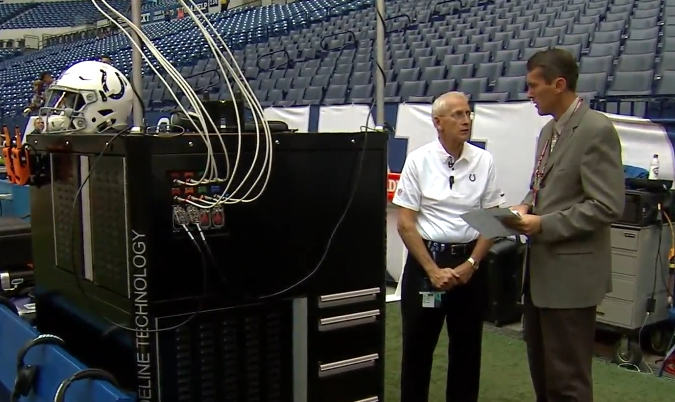INDIANAPOLIS (WTHR) – Every play of every NFL game is full of collisions, and the potential for concussions. The National Football League is watching players on the field closely for signs and symptoms of brain injuries.
At least four trained medical staff have their eyes keenly focused on the action, watching from the sideline and the press box.
“Finding it, diagnosing it, taking that player away from an environment, letting him rest is the crucial part of I think having so many eyes on the field,” said Dr. Mitesh Shah, a neurosurgeon with Goodman Campbell Brain & Spine at IU Health.
Dr. Shah is also hired by the NFL as an unaffiliated neuro-trauma consultant (UNC) on the sideline. The UNC provides a separate opinion from the team doctor on concussion evaluations.
While fans watch the Colts play at Lucas Oil Stadium, a team of doctors and trainers also watches. But they’re not looking for big plays and touchdowns, they’re watching out for head injuries.
“The fan watches the receiver, the running back, the action, so to speak,” said Denny Miller, an athletic trainer certified (ATC) retired from Purdue now hired by the NFL as a spotter in the press box watching for head injuries. “We’re looking at the contact. We’re looking at different things. When the game is over, someone says to us, ‘Hey, that was a great game.’ May have been, may not have been. We don’t know. We’re looking for something else.”
On the sideline, Colts neurosurgeon Dr. Terry Horner looks for big hits working for the team. Dr. Shah is nearby with a second set of eyes and opinion representing the NFL and NFL Players Association.
“If they go down they look to see if they have any signs of a concussion,” said Dr. Horner. “That may be like they get up slow. They kind of grab their helmet or they’re kind of wobbly.”
“It’s a violent game to begin with,” said Dr. Shah. “There is some risk. But by trying to mitigate the risk the best they can by diagnosing a concussion early and not letting someone return and get a second injury, that’s the importance of this.”
Two more athletic trainers working for the league, not the teams, watch with binoculars from a replay booth at the top of the stadium.
“Different angles, different elevation, trying to pick up something that the field level medical people might miss,” said Miller, who has worked in the spotter’s booth since 2102.
The spotters upstairs communicate and share replays with the medical staff on the sideline. The booth and the sideline can review plays from the entire game on the Injury Video Review System.
“Real time is hard to see, particularly when you’re on the sidelines because there’s so much going on and so fast,” said Dr. Horner, looking at the sideline monitor on the Colts bench. “But we can really get a good look here.”
As of last season, the spotters can even stop the game for a potential concussion.
“We have contact with the head official,” said Miller. “We can say medical timeout. He will stop the game. The player must leave the game.”
Miller has never stopped a game, but came close last year before the referee himself spotted the injured player.
New this year, Dr. Horner immediately runs out to the field if he suspects a player is concussed.
“If they get up right away, but they kind of start grabbing their head a little bit, or squinting their eyes or shaking their head or they seem to just stumble a little bit, those are all signs that will tell us,” said Dr. Horner.
The concussion evaluation begins with a series of simple questions:
- Where are we?
- What quarter is it?
- Who scored last?
- Who did we play last week and who won?
A new item on the sideline this season is a pop-up tent with an exam table inside. Inside with privacy from teammates, media and fans, the team neurosurgeon and UNC complete a checklist evaluation on the player using a tablet computer with results sent directly to the NFL.
“We bring him in here, there’s no distraction for him here,” said Dr. Horner. “They think they get more out of the athlete and he’s more honest with us so that we can protect him better.”
PUBLISHED:
